We flew from the capital Antananarivo (from whence it seems all Madagascar air travel must originate) to the northernmost "big" city of Madagascar, which was named Diego-Suarez when Madagascar was a colony but is now known officially as Antsiranana. From Antsiranana we drove south for a couple of hours towards our destination of Ankarana Special Reserve, a park known best for its science-fiction-esque limestone rock formations. On the way we got to know our local guide John, whose passions included rooting for Kobe Bryant in NBA basketball and singing Bob Marley songs with a reggae band in local bars. He also knew his Malagasy wildlife quite well.
Near the start of our trip I made some crack like "if we see any chameleons crossing the road, we have to stop for them", because when I had been in this area ten years earlier we had seen a fairly large Furcifer oustaleti stutter-stepping his way across the pavement. About ten minutes later John spotted a pair of huge chameleons up in the bushes off the side of the road. We stopped and I got a few pictures, but they were a long way off and high up, so the photos aren't great.

Another ten minutes later, we stopped for a chameleon crossing in the road. This one was our second Panther chameleon of the trip, and our first colorful one. John grabbed a nearby stick and encouraged the chameleon to climb it rather than huddle in the middle of the road.
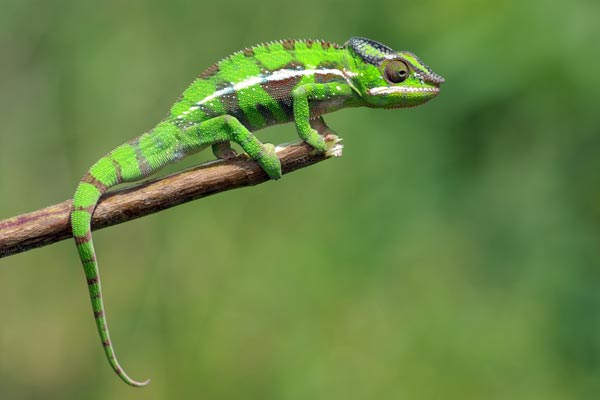
Five minutes after that, we stopped for our second Panther chameleon in the road. This one wasn't as brightly colored, but had a wider assortment of hues.
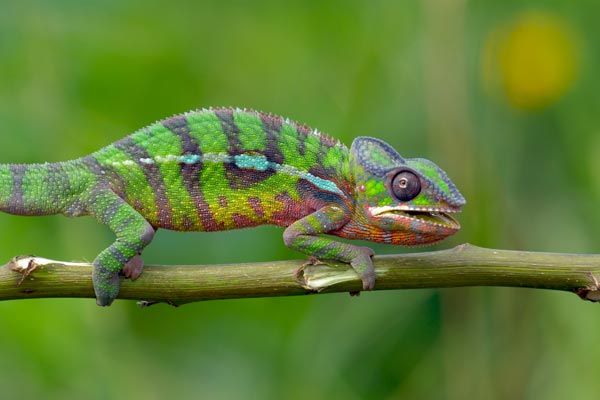
Four more chameleons-in-the-road later (two Oustalet's and two Panthers) we reached the entrance road to Ankarana. I was thinking good things about the northern Malagasy roads by this time (of which there is approximately one worthy of the name).
Here's some of that wacky limestone geology that Ankarana is famous for. These formations are called "tsingy", which comes from the Malagasy word for "walking on tip toe", though I would think that walking across these very sharp rocks on tip toe would just cut your toes up something awful.
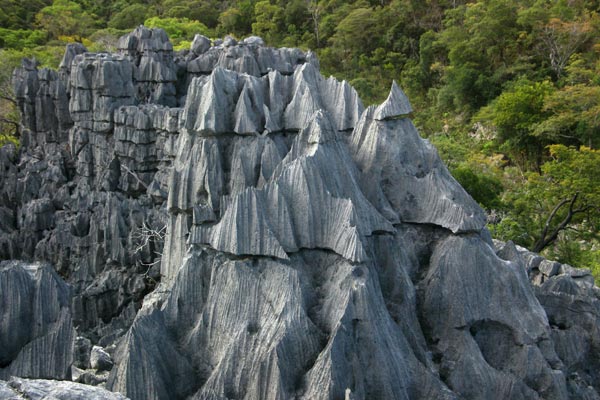
We stopped at the entrance station to change into our hiking clothes and use the small outdoor bathroom (outhouse, really). The first thing I noticed was some sort of Hemidactylus gecko on the side wall of the bathroom. Then I turned my head and saw a nice green Phelsuma madagascariensis grandis on the trunk of a tree right next to the outhouse. Then I turned back and saw a third gecko species on the front wall of the bathroom. I recognized this one immediately as a new species for me, so I lost interest in the Hemidactylus and Phelsuma and got a few photos of this fish-scale gecko before it ran off:
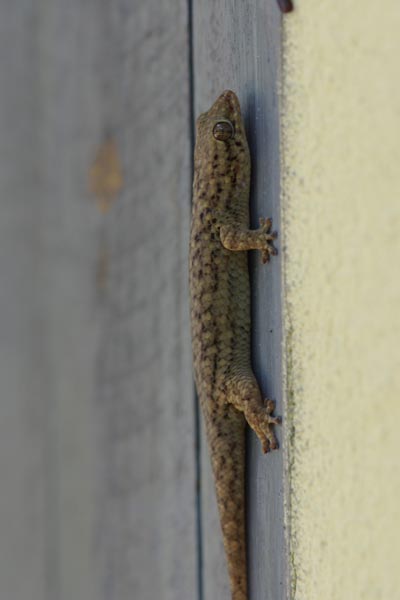
We eventually saw a number of Phelsuma madagascariensis grandis both in the forest and around the local-village-style huts in which we stayed. This is the largest type of Phelsuma. Here's a typically-patterned one:
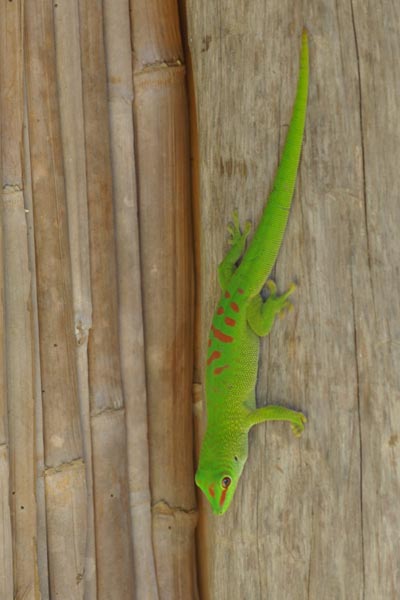
And here's a grizzled old soul with only faint traces of markings remaining:
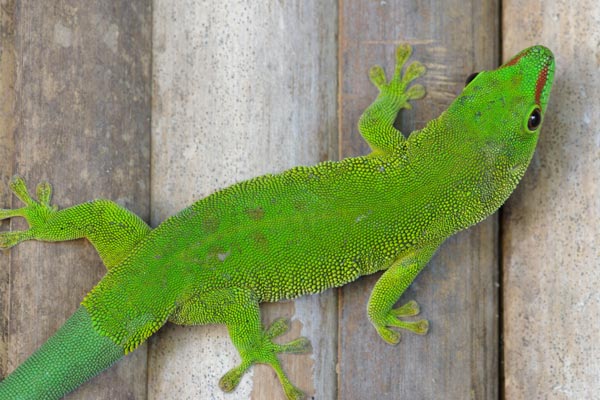
Around our huts there were a few Phelsuma laticauda as well, though not many. They were quite shy here and I didn't have much time to try to photograph them. (At Nosy Komba I later discovered that "shy" is not the adjective typically associated with this species.)
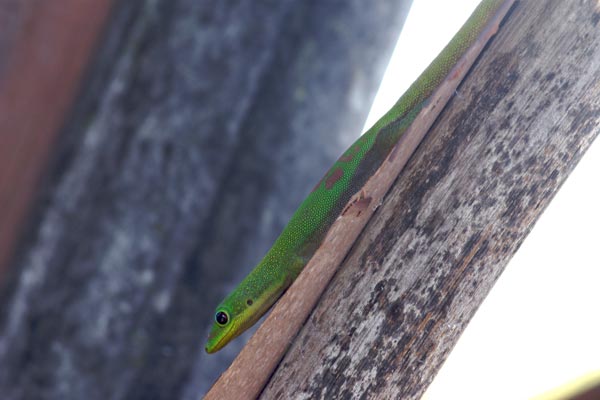
We saw one other species of Phelsuma at Ankarana, assuming these next three are indeed all the same species. The first adult and last adult have significantly different patterning, but I think that both of them, and the juvie in between, are Phelsuma abbotti chekei.

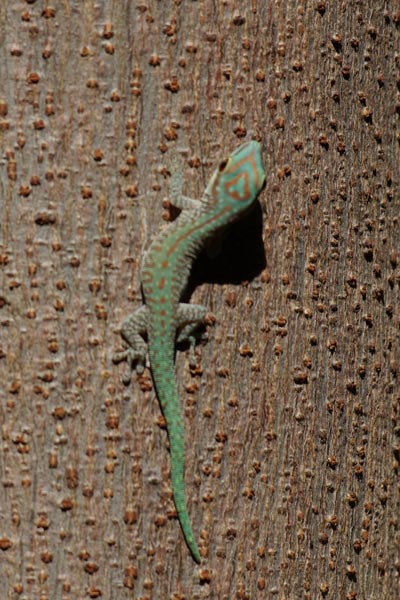

The least exciting gecko I saw in this area was this house gecko living in the dried palm fronds that formed the roof our our hut. This gecko's back legs are covered with little red mites.
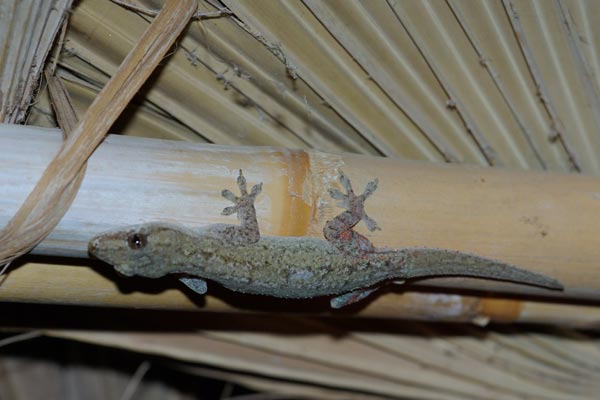
The smallest gecko I saw at Ankarana was this little Lygodactylus, which was a baby of about 1 inch total length. We saw several adults of this species also, all extremely wary. Most Lygodactylus species in Madagascar spend nearly all of their time on trees, but these guys are just as comfortable on the tsingy rock as on plants.
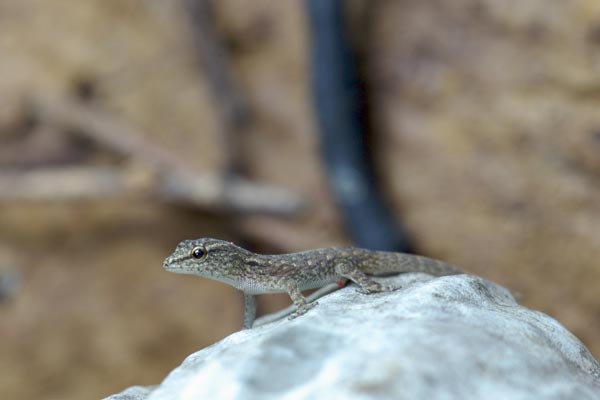
And our final Ankarana gecko was also the largest gecko we saw anywhere in Madagascar, about a foot long from snout to tail tip. Other species in this genus are typically nocturnal, but Homopholis boivini is described as diurnal. We saw this one in plain sight in the middle of the day. It wasn't sleeping, and it moved around the trunk of the tree to avoid my camera, so I guess the description didn't lie.
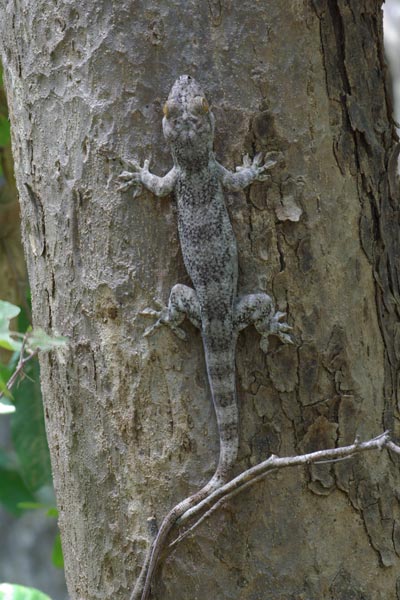
We saw a few larger chameleons in the forest, though frankly they seemed more common on the road. Whenever our guide John saw a chameleon, he'd avoid looking at it and take another step or two, and then we'd play Try To Spot The Chameleon. The great thing about Panther chameleons is that every one seems to be a different set of colors than every other one.
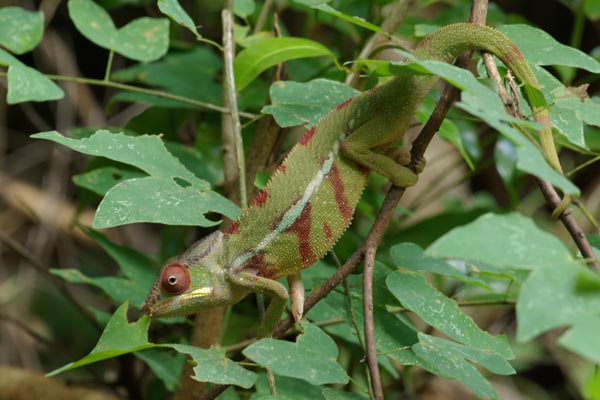
Oustalet's chameleons aren't as beautiful, but their drab colors can be remarkably good camouflage against the branches that they climb around in, making Try To Spot The Chameleon pretty challenging.

At night we stayed in huts that were nearly an hour's drive away from the park, so at Ankarana we didn't have any opportunity to go on night hikes to find sleeping chameleons and other nocturnal wonders. You might think this would drastically reduce our chances to discover tiny Brookesia chameleons, and it probably did, but fortunately for us John could spot 'em crawling in the leaf litter even during the day. After he saw this first one, he let us play Try To Spot The Chameleon for several minutes before he laughed and said "this would take all day" and pointed it out to us. Only he said it with a Bob Marley-esque Jamaican accent.
As best as I can tell, this is Brookesia ebenaui, which was (as far as I could tell) the same species we saw way down south at Anjaha Community Reserve back in part two of these seemingly interminable posts. Brookesia stumpffi also lives in this area, and looks extremely similar, but in some of my photos of this guy I think I can make out the small spines at the base of the tail that are one distinguishing characteristic of B. ebenaui.

Like bigger chameleons, the tiny little Brookesia are capable of rapid changes in hue, though typically only among the earth tones. The next photo is the same individual as in the previous photo, just a few minutes later, after adopting its white-on-top, black-on-bottom look.

A little while later John saw another of these tiny guys blending into the wood on which it was poised. This one looks like it had an accident involving the tip of its tail. The small spines at the base of the tail are clearly visible in this photo (at full size, anyway).
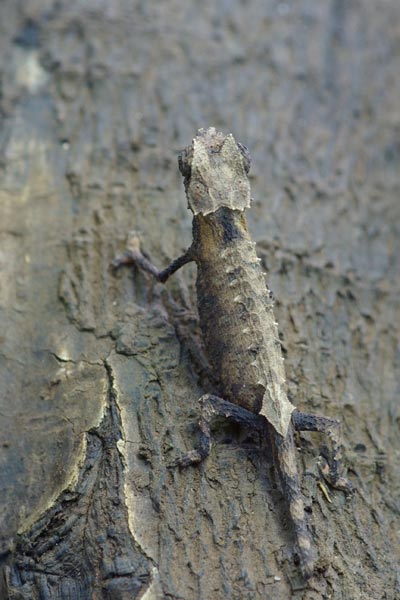
A few skinks were skittering about on the dry forest floor. I believe these are Mabuya elegans rather than the M. gravenhorstii that we had seen earlier at a couple of locations.
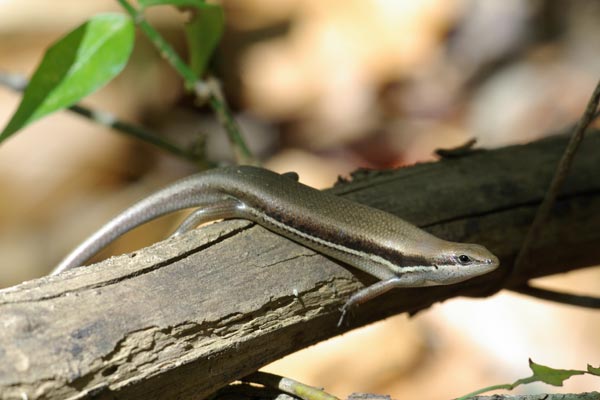
These final lizards are a bit mysterious. They are clearly Zonosaurus, but they don't seem to closely match the looks of any of the Zonosaurus species described in Glaw & Vences. I'm not even completely sure that all three are the same species, since the first adult lacks the obvious bluish tint in the tail that the youngster and second adult share, and the second adult is very iridescent, but the first adult didn't seem to be (though maybe that was just a difference in the lighting). Glaw & Vences don't mention blue-tinted tails for any Zonosaurus. I found some web references to Z. haraldmeieri at Ankarana, though Glaw & Vences list that species only from further north. That seems to be the closest match in appearance, though Z. haraldmeieri is described and pictured as having yellowish to greenish dorsal color with many small black spots, whereas I'd describe the first two here as brownish dorsal color with many small yellow spots, and the third as being basically spotless, with a brownish to greenish iridescent dorsal color and a bluish iridescent tail. There are only a handful of photographs identified as Z. haraldmeieri on the web, and it's not clear that they are all correctly identified. Bill Love has got a photo identified as Z. haraldmeieri from Ankarana on his site. That one looks similar enough to mine that I think Z. haraldmeieri is my best bet at the moment. Hopefully Glaw & Vences will clear this all up in their upcoming 3rd edition.
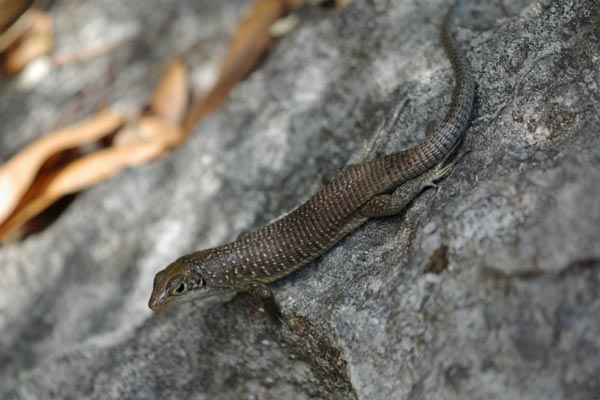
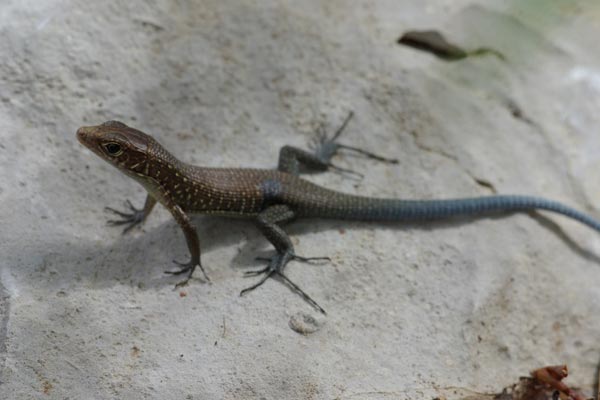

A few minutes after we drove into the park (beyond the gecko-strewn outhouse area), we pulled over to admire another Panther chameleon in the bushes. As we were standing there, our guide John turned around and saw a large Madagascar hog-nosed snake crossing the dirt track. It wasn't happy about sitting still for photos at first, but after slithering twenty feet into the forest or so it came to rest, and I snuck up around it to get a few shots between the leaves.
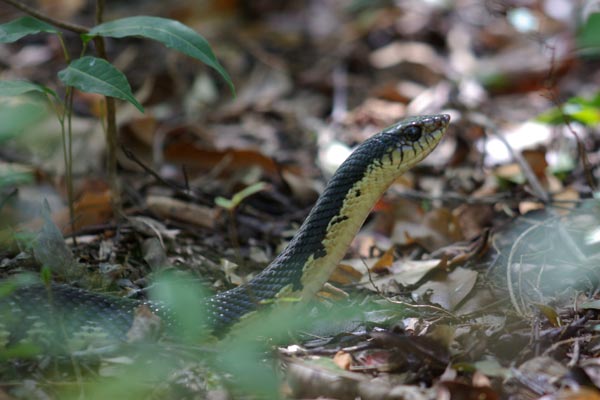
About half an hour later we saw another equally large specimen on the prowl. This one either hadn't noticed us or was just not bothered by our presence, so we kept very still (other than itchy camera trigger fingers) as it meandered about, frequently rooting its upturned snout around under the leaves.
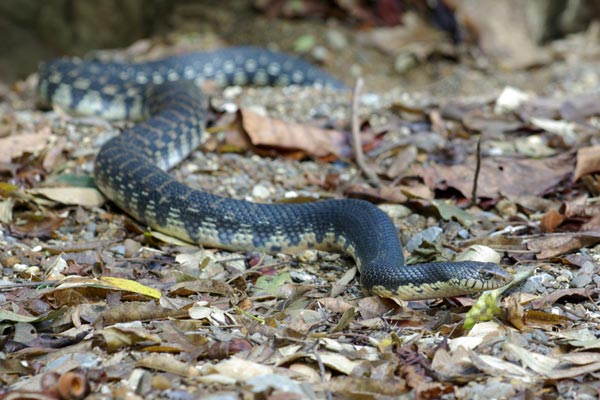
We only ended up seeing three snakes at Ankarana, but they were all large ones. The final one was this handsome Madagascar Ground Boa blending into the forest floor colors.

Ankarana had some nifty non-herps that seem worth tossing into this post. This crab looked like it was constructed from two different animals glued together.
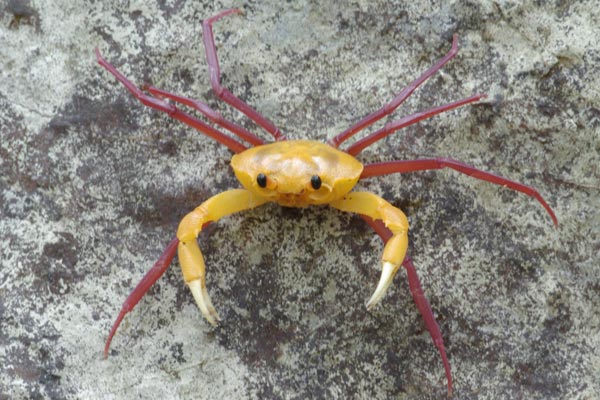
At least one of these three weevils seems to be confused about what it's doing.

Not being birders, we didn't realize Madagascar had parrots until we said "that bird looks like a parrot" and our guide said the Malagasy/Jamaican equivalent of "duh".
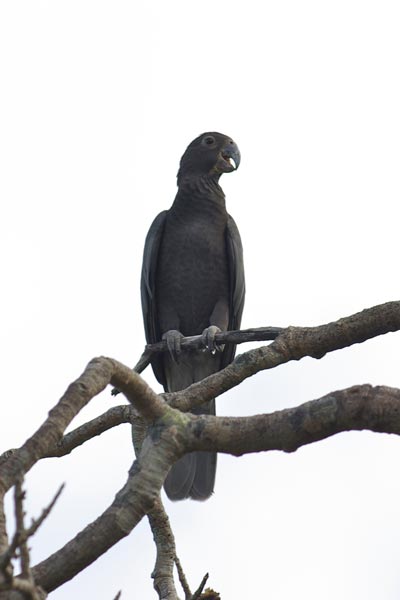
After the tsingy, Ankarana is perhaps best known for its many types of bats, some of which live in large numbers in relatively easily accessible caves.
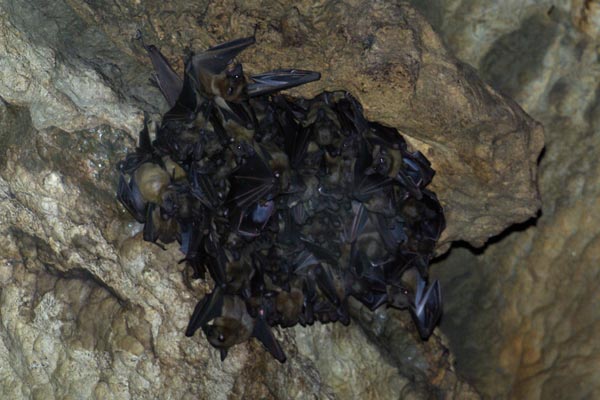
We got a nice look at a nocturnal lemur that wasn't hiding itself very well during the day.

All of the other lemurs we saw while at Ankarana were Crowned Lemurs, which are particularly cute.
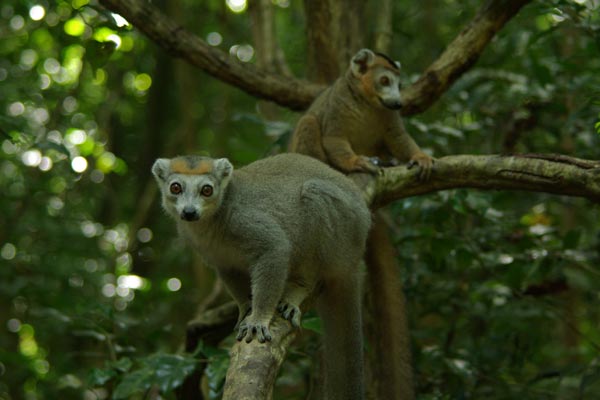
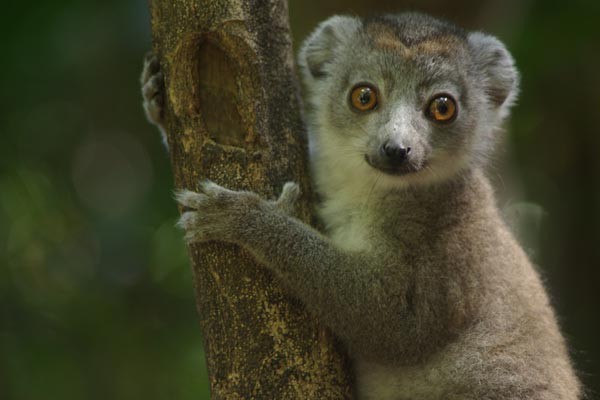
Both of the times that we admired troops of Crowned Lemurs, we also admired the beautiful ring-tailed mongoose that was sneaking around nearby.
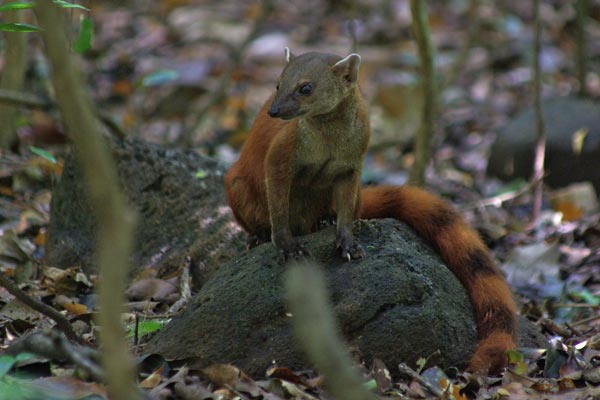
Next: Nosy Komba